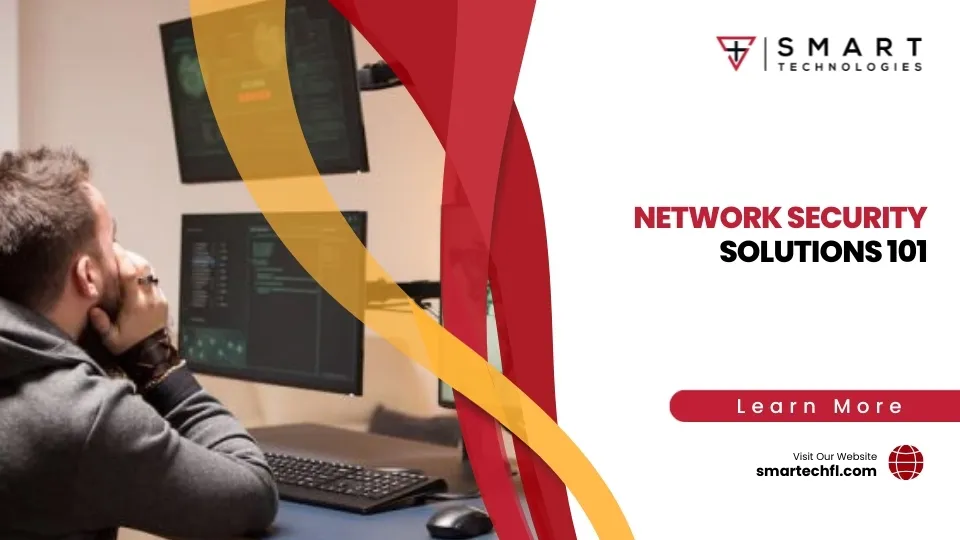Real-Time Threat Detection: Keeping Your Business Safe
Real-Time Threat Detection
The ability to detect and respond to cyber threats in real-time is paramount. Real-time threat detection refers to the capability of identifying potential cyber threats as they happen, allowing for immediate response and mitigation. This proactive approach is crucial in preventing data breaches, minimizing damage, and ensuring the overall security of an organization’s digital assets.
Importance of Cybersecurity in the Modern World

As businesses increasingly rely on digital infrastructure, the importance of robust cybersecurity measures cannot be overstated. Cyber threats are becoming more sophisticated and frequent, posing significant risks to organizations of all sizes. From financial losses to reputational damage, the consequences of cyber attacks can be devastating. Hence, investing in effective real-time threat detection systems is essential for maintaining a secure business environment.
Purpose of the Article
This article aims to provide a comprehensive understanding of real-time threat detection, its components, techniques, and technologies. By exploring the current threat landscape, the role of AI and machine learning, and the importance of threat intelligence, readers will gain valuable insights into how to protect their businesses from cyber threats.
Understanding Real-Time Threat Detection
What is Real-Time Threat Detection?
Real-time threat detection involves monitoring network traffic, user behavior, and system activities to identify and respond to potential threats as they occur. This approach leverages advanced technologies, such as artificial intelligence and machine learning, to analyze vast amounts of data and detect anomalies indicative of malicious activity. Key concepts include continuous monitoring, automated responses, and proactive defense mechanisms.
Why Real-Time Threat Detection is Crucial
Real-time threat detection is crucial for several reasons:
- Impact on Business Security: It allows organizations to quickly identify and mitigate threats, reducing the risk of data breaches and other cyber attacks.
- Benefits over Traditional Methods: Traditional security measures often rely on periodic scans and manual reviews, which can miss fast-evolving threats. Real-time detection provides continuous surveillance, ensuring that threats are identified and addressed promptly.
The Threat Landscape
Evolving Cyber Threats
The cyber threat landscape is constantly evolving, with new threats emerging daily. Current trends indicate an increase in sophisticated cyber attacks, such as ransomware, phishing, and advanced persistent threats (APTs). These threats are designed to bypass traditional security measures and cause maximum damage.
Challenges in Detecting Modern Threats
Modern cyber threats are more sophisticated than ever, utilizing advanced techniques to evade detection. Challenges include:
- Sophistication of Cyber Attacks: Attackers use complex methods, such as polymorphic malware and fileless attacks, to avoid detection.
- Volume of Threats: The sheer number of threats can overwhelm traditional security systems, making it difficult to identify and respond to every potential threat.
Components of an Effective Threat Detection System
Threat Detection Tools and Solutions
An effective threat detection system comprises various tools and solutions designed to identify and respond to threats in real-time. Key features include:
- Key Features: Advanced analytics, machine learning capabilities, and real-time alerting.
- Types of Tools: Intrusion detection systems (IDS), endpoint detection and response (EDR) tools, and security information and event management (SIEM) systems.
Real-Time Monitoring and Alerts
Continuous monitoring is essential for identifying threats as they occur. Real-time monitoring involves:
- Importance of Continuous Monitoring: Ensuring that all network activities and user behaviors are constantly analyzed for suspicious activities.
- How Real-Time Alerts Work: Alerts are generated when potential threats are detected, enabling security teams to respond immediately.
Techniques and Technologies in Real-Time Threat Detection

Leveraging AI and Machine Learning
Artificial intelligence (AI) and machine learning (ML) are revolutionizing threat detection by:
- Role of AI in Threat Detection: Using AI algorithms to identify patterns and anomalies in large datasets.
- Machine Learning Applications: ML models learn from historical data to predict and identify potential threats, improving over time as they are exposed to more data.
Anomaly Detection and Behavioral Analytics
Anomaly detection and behavioral analytics are key techniques in real-time threat detection:
- Identifying Suspicious Activities: Anomaly detection involves identifying deviations from normal behavior, which may indicate malicious activity.
- Analyzing Network Traffic and User Behavior: Behavioral analytics examine user and network activities to detect patterns that suggest potential threats.
Threat Intelligence and Proactive Defense
Utilizing Threat Intelligence Data
Threat intelligence involves gathering and analyzing information about potential and known threats. This data enhances threat detection by:
- Sources of Threat Intelligence: Threat intelligence can be sourced from various channels, including open-source data, commercial providers, and information-sharing communities.
- How Threat Intelligence Enhances Detection: Integrating threat intelligence with detection systems provides context to identified threats, improving the accuracy and speed of response.
Proactive Threat Detection
Being proactive in threat detection is crucial for staying ahead of cyber threats. Proactive measures include:
- Importance of Being Proactive: Proactive detection helps identify threats before they can cause damage, reducing the overall risk to the organization.
- Techniques for Proactive Cyber Defense: Implementing regular vulnerability assessments, threat hunting, and continuous monitoring to identify and mitigate threats early.
Real-Time Detection and Response
Detection and Response Mechanisms
Effective threat detection is only half the battle; organizations must also have robust response mechanisms in place. These mechanisms include:
- Incident Response Plans: A well-defined incident response plan outlines the steps to be taken when a threat is detected. This includes identifying the threat, containing it, eradicating it, and recovering from the attack. Having a plan in place ensures a structured and efficient response.
- Real-Time Incident Handling: Responding to incidents in real-time minimizes damage and reduces the impact of an attack. This involves deploying automated tools that can quickly isolate affected systems, block malicious activities, and alert the security team.
Automated Threat Detection and Response
Automation plays a crucial role in modern threat detection and response strategies:
- Benefits of Automation: Automated systems can process vast amounts of data more quickly and accurately than human analysts, ensuring timely detection and response. They also free up human resources to focus on more complex tasks.
- Examples of Automated Systems: Examples include Security Orchestration, Automation, and Response (SOAR) platforms, which integrate various security tools and automate response workflows, and advanced EDR solutions that automatically quarantine and remediate threats.
Role of Security Teams and Analysts

Importance of Human Analysts
Despite the advancements in automation, human analysts remain essential to cybersecurity:
- Analysts’ Role in Threat Detection: Analysts provide context and insights that automated systems may miss. They investigate alerts, validate threats, and make critical decisions during incident response.
- Enhancing Analyst Efficiency with Tools: Tools like SIEM systems, threat intelligence platforms, and automated analysis tools enhance analysts’ capabilities, allowing them to manage more threats effectively.
Building a Skilled Security Team
A skilled security team is the backbone of any effective cybersecurity strategy:
- Key Skills and Training: Security professionals should be proficient in areas such as network security, incident response, and threat intelligence.
- Importance of Continuous Learning: The threat landscape is constantly evolving, making continuous learning essential. Encouraging participation in industry conferences, webinars, and threat intelligence sharing communities helps teams stay updated on the latest threats and defense strategies.
Future of Real-Time Threat Detection
Emerging Technologies and Trends
The future of threat detection will be shaped by advancements in technology and evolving threat landscapes:
- AI and Machine Learning Innovations: AI and ML will continue to evolve, offering more sophisticated threat detection capabilities. Future innovations may include advanced behavioral analytics, predictive threat modeling, and real-time threat hunting.
- Future Threat Detection Tools: Emerging tools will likely focus on integration, automation, and user-friendly interfaces. These tools will enable security teams to manage complex environments more efficiently and effectively.
Preparing for the Future
Organizations must proactively prepare for future threats by:
- Staying Ahead of Cyber Threats: Implementing continuous improvement processes, adopting cutting-edge technologies, and maintaining a proactive security posture are key to staying ahead of evolving threats.
- Continuous Improvement in Cyber Defense: Regularly reviewing and updating security policies, conducting routine vulnerability assessments, and investing in ongoing training and development for security teams ensure a resilient cybersecurity strategy.
What People May Also Ask
What is Real-Time Threat Detection?
Real-time threat detection involves monitoring and analyzing data as it is generated to identify and respond to cyber threats immediately. It is crucial for preventing data breaches and minimizing damage from attacks.
How Does AI Improve Threat Detection?
AI enhances threat detection by identifying patterns and anomalies in large datasets that may indicate malicious activity. Machine learning algorithms learn from historical data to improve detection accuracy over time.
What Are the Common Threat Detection Tools?
Common tools include SIEM systems, EDR solutions, and IDS/IPS systems. These tools offer features such as real-time monitoring, automated alerting, and incident response capabilities.
Why is Proactive Threat Detection Important?
Proactive threat detection helps identify and mitigate threats before they can cause significant damage, reducing the overall risk to the organization and improving security posture.
How Can Businesses Enhance Their Cyber Defense?
Businesses can enhance their cyber defense by implementing robust threat detection systems, continuously training security teams, leveraging threat intelligence, and adopting a proactive security approach.
Conclusion
Real-time threat detection is an essential component of modern cybersecurity strategies. By understanding the evolving threat landscape, leveraging advanced technologies, and implementing proactive defense measures, organizations can significantly enhance their ability to detect and respond to cyber threats.
Investing in real-time threat detection systems is crucial for maintaining a secure business environment. These systems provide continuous monitoring, automated responses, and valuable insights, helping organizations stay ahead of potential threats.
As cyber threats continue to evolve, so must the strategies and tools used to combat them. By staying informed about emerging technologies, continuously improving cybersecurity practices, and investing in skilled security teams, businesses can ensure robust protection against the ever-changing landscape of cyber threats.
You can contact us by phone, email, or by visiting our offices:
- Phone: (386) 261-8323
- Email: contact@smarttechfl.com
- Address: 771 Fentress Blvd. #10, Daytona Beach, FL 32114












